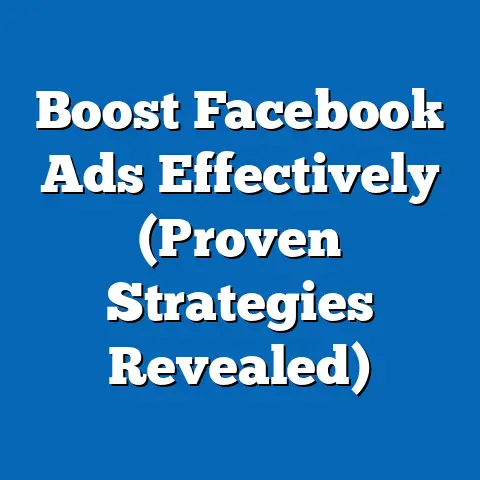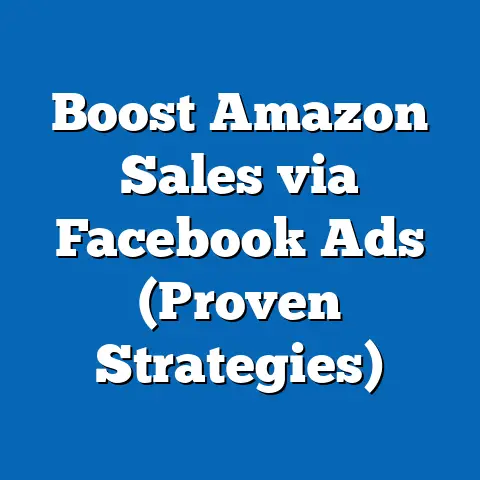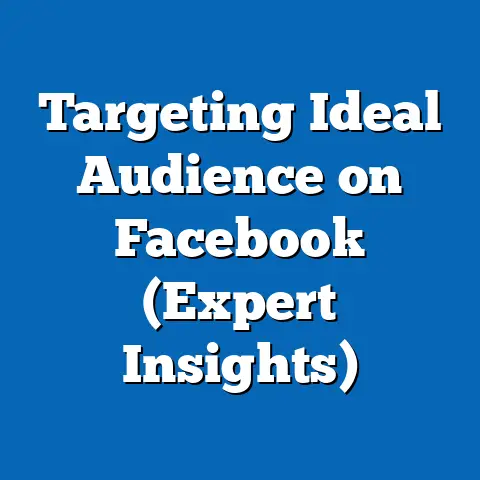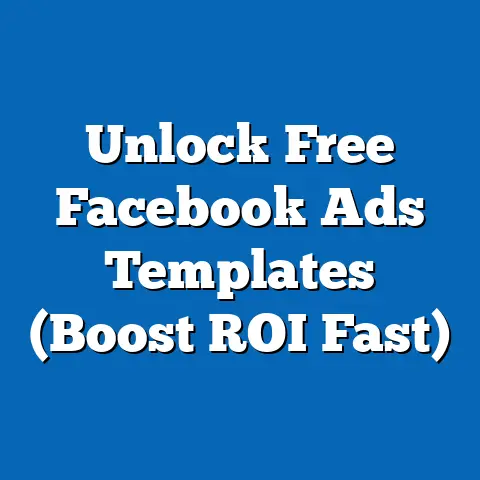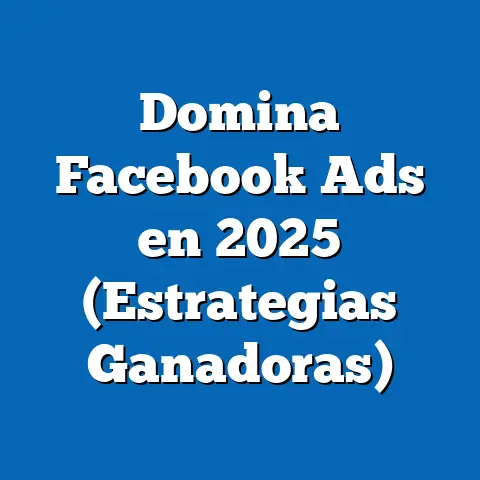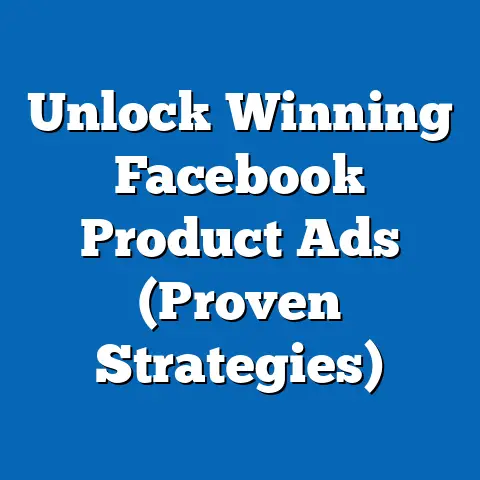What Facebook Ads Really Cost You (Insider Pricing Guide)
Have you ever scrolled through Facebook and wondered why some businesses seem to have cracked the code, their ads popping up everywhere and their success seemingly effortless, while others struggle to even get a click? The truth is, understanding the true cost of Facebook advertising goes far beyond just setting a daily budget. It’s a complex ecosystem of auctions, algorithms, and creative strategies. And, frankly, it can be a bit intimidating.
I’ve spent years navigating the ins and outs of Facebook Ads Manager, managing campaigns for everyone from local boutiques to national brands. I’ve seen firsthand how a seemingly small oversight in budgeting or targeting can lead to wasted ad spend and disappointing results. That’s why I’m writing this guide – to pull back the curtain and give you an insider’s look at what Facebook ads really cost you, and how to make sure you’re getting the most bang for your buck.
1. Understanding Facebook Ads: An Overview
Facebook ads, now more accurately referred to as Meta Ads, are paid messages that businesses use to reach specific audiences on the Facebook and Instagram platforms. They’re a cornerstone of modern digital marketing, offering unparalleled targeting capabilities and the potential to reach billions of users worldwide.
Why are Facebook ads so important?
- Massive Reach: Facebook boasts billions of active users, providing a vast potential audience for your message.
- Precise Targeting: You can target users based on demographics, interests, behaviors, and even custom audiences created from your own customer data.
- Measurable Results: Unlike traditional advertising, Facebook ads offer detailed analytics, allowing you to track your ROI and optimize your campaigns in real-time.
- Diverse Formats: From simple image ads to engaging video ads and interactive experiences, Facebook offers a variety of ad formats to suit your brand and message.
A Quick Look at Ad Formats:
- Image Ads: The simplest format, using a single image and short text to convey your message. Great for brand awareness and showcasing products.
- Video Ads: Capture attention with dynamic video content. Ideal for storytelling, product demos, and tutorials.
- Carousel Ads: Display multiple images or videos in a scrollable format. Perfect for showcasing a range of products or highlighting different features.
- Collection Ads: Designed for mobile shoppers, these ads feature a hero image or video followed by several product images, allowing users to browse and purchase directly from the ad.
- Lead Ads: Collect valuable lead information directly within the Facebook platform. Useful for building email lists and generating sales inquiries.
The Power of Targeting:
The real magic of Facebook ads lies in its targeting capabilities. You can narrow your audience based on:
- Demographics: Age, gender, location, education, job title, etc.
- Interests: Hobbies, passions, brands they follow, pages they like.
- Behaviors: Purchase history, online activity, device usage.
- Custom Audiences: Upload your own customer lists or website visitor data to create highly targeted audiences.
- Lookalike Audiences: Find new customers who share similar characteristics with your existing audience.
Takeaway: Facebook ads offer a powerful way to reach your target audience with relevant messages. Understanding the different ad formats and targeting options is the first step to mastering the platform.
2. The Basics of Facebook Ad Pricing
Now, let’s dive into the financial side of things. Understanding how Facebook ad pricing works is crucial for creating effective and cost-efficient campaigns.
Key Pricing Models:
- Cost Per Click (CPC): You pay each time someone clicks on your ad. This is a good option if your goal is to drive traffic to your website or landing page.
- Cost Per Impression (CPM): You pay for every 1,000 times your ad is shown, regardless of whether anyone clicks on it. Best for brand awareness campaigns where your primary goal is to get your message in front of as many people as possible.
The Auction System:
Facebook uses an auction system to determine which ads are shown to users and how much advertisers pay. When someone in your target audience visits Facebook or Instagram, the platform runs an auction among all the ads targeting that user.
Here’s how it works:
- Advertisers bid: You set a bid for how much you’re willing to pay for a click (CPC) or 1,000 impressions (CPM).
- Facebook calculates the “total value”: This isn’t just about the highest bid. Facebook also considers the ad’s quality and relevance to the user.
- The winning ad is shown: The ad with the highest “total value” wins the auction and is displayed to the user.
- You pay: You’ll typically pay slightly more than the next highest bidder, ensuring that you win the auction without overpaying.
Factors Influencing Ad Pricing:
Several factors can influence the cost of your Facebook ads:
- Industry: Some industries are more competitive than others, driving up ad costs. For example, the finance and insurance industries often have higher CPCs than the retail sector.
- Targeting: Broad targeting can be cheaper, but it may also result in lower conversion rates. Narrow targeting can be more expensive, but it can also lead to higher-quality leads and sales.
- Ad Quality: Facebook rewards ads that are engaging and relevant to users. High-quality ads tend to have lower costs and better performance.
- Ad Placement: Different ad placements (e.g., Facebook News Feed, Instagram Stories, Audience Network) can have different costs.
- Time of Year: Ad costs tend to increase during peak seasons like holidays and Black Friday.
- Bidding Strategy: Using automatic bidding allows Facebook to optimize your bids for you, while manual bidding gives you more control but requires more expertise.
- Competition: The more advertisers targeting the same audience, the higher the ad costs will be.
Takeaway: Facebook ad pricing is dynamic and influenced by several factors. Understanding these factors can help you optimize your campaigns and control your costs.
3. Breaking Down the Costs
Now, let’s get granular. It’s not just about the CPC or CPM you see in Ads Manager. There are several hidden costs that can significantly impact your overall ad spend.
Ad Creation Costs:
- Graphic Design: Creating visually appealing ads requires professional graphic design. Hiring a freelance designer or agency can cost anywhere from \$50 to \$500+ per ad, depending on the complexity.
- Video Production: Video ads tend to perform better than image ads, but they also require more investment. Video production costs can range from \$500 to \$5,000+ per video, depending on the length, quality, and complexity.
- Copywriting: Compelling ad copy is essential for attracting attention and driving conversions. Hiring a professional copywriter can cost anywhere from \$50 to \$500+ per ad, depending on the length and complexity.
- Photography: Professional product photography can significantly improve the effectiveness of your ads. Expect to pay anywhere from \$50 to \$500+ per product photo.
Budgeting for Ads:
- Daily vs. Lifetime Budgets: Facebook offers two budgeting options: daily and lifetime. A daily budget allows you to set a fixed amount that you’re willing to spend each day. A lifetime budget allows you to set a total amount that you’re willing to spend over the entire duration of your campaign.
- Choosing the Right Budget: The right budget depends on your goals, target audience, and ad quality. Start with a small budget and gradually increase it as you optimize your campaigns. I usually recommend starting with at least \$5-10 per day per ad set to gather enough data to make informed decisions.
- Budget Fluctuation: Keep in mind that even with a daily budget, your actual spend can fluctuate slightly. Facebook may spend more on days when it sees a higher potential for conversions and less on days when performance is lower.
Targeting Costs:
- Broad vs. Narrow Targeting: Broad targeting (e.g., targeting everyone in a specific city) is generally cheaper than narrow targeting (e.g., targeting people who are interested in specific hobbies and have specific demographics).
- Custom Audiences and Lookalike Audiences: Creating custom audiences and lookalike audiences can be more expensive than using Facebook’s built-in targeting options, but they can also lead to higher conversion rates.
- Layered Targeting: Layering multiple targeting options (e.g., targeting people who are interested in both “fitness” and “healthy eating”) can increase the cost of your ads.
Management Fees:
- In-House vs. Agency: If you don’t have the time or expertise to manage your Facebook ads in-house, you may need to hire a social media manager or agency. Management fees can range from 10% to 20% of your ad spend or a fixed monthly retainer.
- Hidden Costs: Be sure to ask about any hidden costs, such as setup fees, reporting fees, or consulting fees.
Takeaway: Don’t just focus on the CPC or CPM. Consider all the costs associated with creating and managing your Facebook ads to get a realistic picture of your overall ad spend.
4. Additional Costs Beyond the Ad Spend
The rabbit hole goes even deeper! Beyond the obvious costs, there are other expenses that can creep up and impact your bottom line.
Cost of Tools for Analytics and Optimization:
- Facebook Analytics: While Facebook provides its own analytics tools, they can be limited. Many businesses invest in third-party analytics platforms to get a more comprehensive view of their ad performance.
- A/B Testing Tools: A/B testing is essential for optimizing your ads, but it can also require additional tools and resources.
- Automation Tools: Automating tasks like bid management and reporting can save time and improve efficiency, but it can also come with a price tag.
Expenses Related to Landing Page Creation or Website Optimization:
- Landing Page Design: Your landing page is where visitors land after clicking on your ad. A well-designed landing page is essential for converting visitors into leads or customers.
- Website Optimization: Optimizing your website for mobile devices and improving its loading speed can also improve the performance of your ads.
- Conversion Rate Optimization (CRO): Investing in CRO can help you increase the percentage of visitors who take a desired action on your website, such as making a purchase or filling out a form.
The Impact of Retargeting Strategies on Overall Costs:
- Retargeting Lists: Creating retargeting lists can be more expensive than using Facebook’s built-in targeting options, but it can also lead to higher conversion rates.
- Ad Frequency: Showing the same ad too many times can annoy users and decrease its effectiveness. Monitor your ad frequency and adjust your targeting or creative as needed.
Takeaway: Remember that Facebook ads are just one piece of the puzzle. Investing in analytics, website optimization, and retargeting strategies can help you maximize your ROI.
5. Understanding Return on Investment (ROI)
Ultimately, the true cost of Facebook ads is determined by your return on investment (ROI). Are you getting more value out of your ads than you’re putting in?
Key Metrics for Measuring ROI:
- Conversion Rate: The percentage of visitors who take a desired action on your website, such as making a purchase or filling out a form.
- Customer Acquisition Cost (CAC): The total cost of acquiring a new customer through Facebook ads.
- Return on Ad Spend (ROAS): The amount of revenue generated for every dollar spent on Facebook ads.
- Lifetime Value (LTV): The total revenue you expect to generate from a customer over their entire relationship with your business.
Calculating ROI:
- Simple ROI Calculation: (Revenue – Cost) / Cost x 100
- More Detailed ROI Calculation: (LTV – CAC) / CAC x 100
ROI Scenarios:
- High ROI: You’re generating significant revenue and acquiring new customers at a low cost.
- Medium ROI: You’re generating some revenue and acquiring new customers at a reasonable cost.
- Low ROI: You’re not generating enough revenue or acquiring new customers to justify your ad spend.
Improving Your ROI:
- Optimize Your Targeting: Make sure you’re targeting the right audience with the right message.
- Improve Your Ad Quality: Create engaging and relevant ads that resonate with your target audience.
- Optimize Your Landing Page: Make sure your landing page is designed to convert visitors into leads or customers.
- Track Your Results: Monitor your key metrics and make adjustments to your campaigns as needed.
Takeaway: Focus on measuring your ROI and making data-driven decisions to optimize your campaigns and maximize your return on investment.
6. Industry Averages and Trends
So, what’s “normal” when it comes to Facebook ad costs? It’s important to understand industry benchmarks to gauge your performance and identify areas for improvement.
Average CPC and CPM Rates:
According to recent data, the average CPC across all industries is around \$0.50 to \$2.00, while the average CPM is around \$5 to \$15. However, these numbers can vary significantly depending on your industry, target audience, and ad quality.
Industry-Specific Benchmarks:
- Finance and Insurance: Higher CPCs and CPMs due to high competition and strict regulations.
- Retail: Moderate CPCs and CPMs, with fluctuations based on seasonality and promotions.
- Healthcare: Moderate to high CPCs and CPMs, with increased competition in certain niches.
- Technology: Moderate CPCs and CPMs, with a focus on driving app installs and software subscriptions.
Trends in Facebook Advertising Costs:
- Increasing Competition: As more businesses flock to Facebook advertising, competition is increasing, driving up ad costs.
- Mobile Dominance: Mobile advertising continues to dominate, with a growing emphasis on video and interactive formats.
- Privacy Concerns: Increased privacy regulations and user awareness are impacting targeting capabilities and ad performance.
- AI and Automation: AI and automation are playing a bigger role in ad optimization, allowing advertisers to improve their ROI with less manual effort.
Takeaway: Stay informed about industry averages and trends to benchmark your performance and adapt your strategies accordingly.
7. Real-Life Case Studies
Let’s look at some real-world examples of businesses that have successfully navigated the costs of Facebook ads.
Case Study 1: Local E-commerce Boutique
- Challenge: Limited budget and high competition from larger retailers.
- Solution: Targeted local audiences with visually appealing product images and compelling ad copy. Utilized retargeting to re-engage website visitors.
- Results: Increased website traffic by 50%, boosted online sales by 30%, and achieved a positive ROI within three months.
Case Study 2: National SaaS Company
- Challenge: Generating high-quality leads at a reasonable cost.
- Solution: Created lead ads with targeted questions to qualify prospects. Used lookalike audiences to expand reach and find new potential customers.
- Results: Reduced cost per lead by 40%, increased conversion rates by 25%, and generated a significant return on ad spend.
Case Study 3: Regional Healthcare Provider
- Challenge: Increasing brand awareness and driving appointments.
- Solution: Utilized video ads to showcase patient testimonials and highlight the benefits of their services. Targeted specific demographics and geographic areas.
- Results: Increased brand awareness by 60%, boosted appointment bookings by 35%, and achieved a positive ROI within six months.
Key Takeaways from These Case Studies:
- Targeting is Key: Focus on reaching the right audience with the right message.
- Ad Quality Matters: Create engaging and relevant ads that resonate with your target audience.
- Track Your Results: Monitor your key metrics and make adjustments to your campaigns as needed.
- Be Patient: Achieving a positive ROI takes time and effort. Don’t get discouraged if you don’t see results immediately.
Takeaway: These case studies demonstrate that with the right strategy and execution, Facebook ads can be a powerful tool for driving business growth.
8. Conclusion: The True Cost of Facebook Ads
So, what is the true cost of Facebook ads? As you’ve seen, it’s not just about the amount you spend on clicks or impressions. It’s a complex equation that includes ad creation costs, budgeting considerations, targeting expenses, management fees, and the cost of tools and resources.
The key is to understand all these factors and make informed decisions based on your goals, target audience, and budget. By focusing on creating high-quality ads, targeting the right audience, and optimizing your campaigns for ROI, you can unlock the power of Facebook advertising and drive significant business growth.
Remember, Facebook advertising is an ongoing process of testing, learning, and optimization. Don’t be afraid to experiment with different ad formats, targeting options, and bidding strategies to find what works best for your business.
And, most importantly, don’t get discouraged if you don’t see results immediately. Building a successful Facebook advertising campaign takes time, effort, and a willingness to adapt to the ever-changing landscape. But with the right approach, you can achieve a positive ROI and drive significant business growth.
Next Steps:
- Audit Your Current Campaigns: Identify areas for improvement in your targeting, ad creative, and budgeting.
- Invest in Training: Take a course or attend a workshop to learn more about Facebook advertising best practices.
- Experiment with New Strategies: Try out different ad formats, targeting options, and bidding strategies to find what works best for your business.
- Track Your Results: Monitor your key metrics and make adjustments to your campaigns as needed.
- Stay Informed: Keep up with the latest Facebook advertising trends and best practices by following industry blogs and attending conferences.
By taking these steps, you can master the art of Facebook advertising and unlock its full potential for your business. Good luck!

